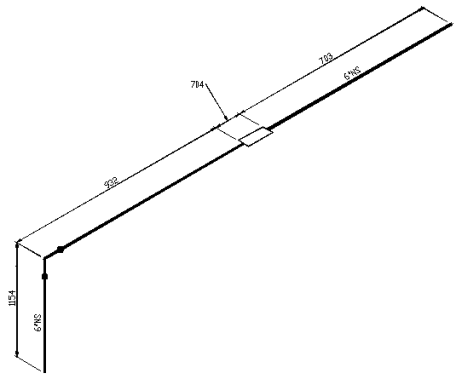Modeling Requirements
To export assets to PCF you must make sure the following modeling requirements are met:
Connectivity
PCF exported from V-Suite CORE describes a network of connected piping assets. The assets you select for export must therefore consist of connected piping assets.
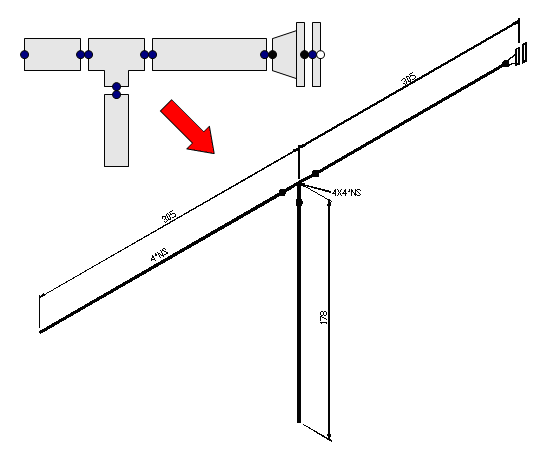
PCF Symbol Key Mapping
In addition to connectivity the PCF interface requires assets be uniquely mapped to a PCF Symbol Key (SKEY). This PCF Symbol Mapping is based on the asset’s template and, if necessary, the catalog type attribute. For instance, the “Flange” asset’s template does not uniquely map the asset to the appropriate symbol key: such asset may be WELD NECK” or “SLIP-ON” flanges. To map the asset to the correct symbol key, the catalog type attribute is required. Catalog attributes are automatically set if the asset is placed from the catalog, but not automatically set if not placed from the catalog. In this example, the flange asset must be placed from a catalog or you must manually set the appropriate catalog type attribute.
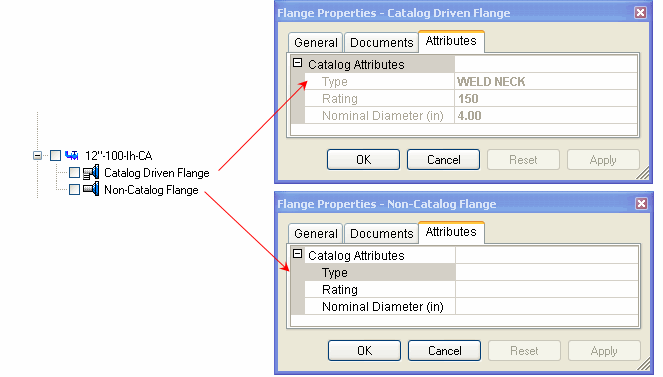
In cases where the template uniquely maps to a PCF symbol key, it is not necessary to set the catalog type attribute. For instance, the “Check Valve” asset has a template name (“Check Valve”) that uniquely maps such assets to the appropriate ISOGEN symbol key (VC** or CK**), thus the catalog type attribute is not required.
Connect Point Nominal Diameter
In addition to the PCF symbol key the PCF interface will also export the nominal pipe diameter at each connection point (for instance 6” x 4” reducer). If an asset is not placed from the catalog, there will be no connection point information available, and in that case the interface will try to get the connection point nominal size from the immediate connected asset.
Consider the following example;
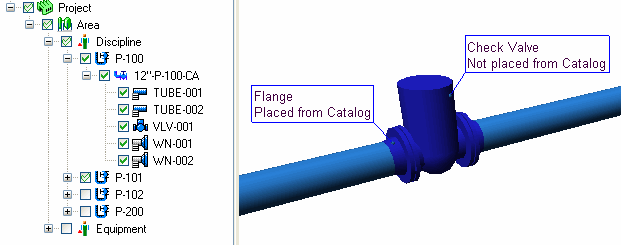
The check valve (VLV-001) is not placed from a catalog, so does not have nominal size at its start and end connection. The check valve is connected to catalog placed flanges (WN-001 and WN-002). The PCF Interface will assign the nominal size of the connected flanges to the check valve.
Please note that the interface will only assign the size of the immediate connected asset, it will not propagate a size through a network of connected assets.
If the interface cannot get the size from the asset or its immediate connected asset, it will attempt to get the size from a parent asset attribute. This attribute can be set in the advanced options of the Asset Selection page. Consider the following example of a partially insulated pipe line.
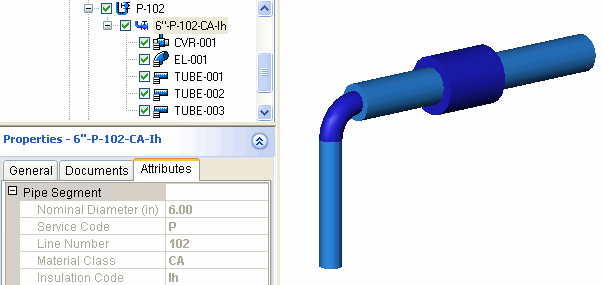
The insulated pipes and valve cover do not have a nominal diameter assigned. In order for the interface to assign the components nominal diameter it will have to get the diameter from a parent asset. In this example the components are children of piping segment 6”-P-102-CA-Ih which has a bore unit attribute called ‘Nominal Diameter’ (6”). The interface will assign this size to all child assets that do not have nominal diameter;
